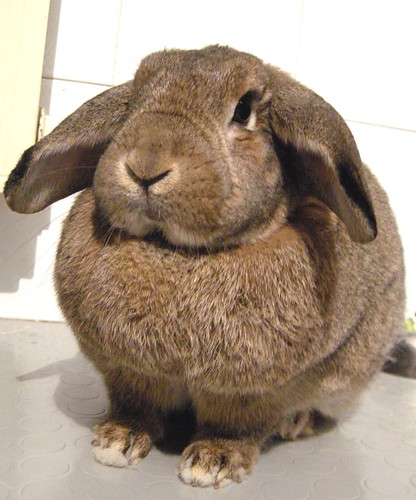 Breeding Rabbits
Breeding RabbitsWell, aside from appearance, there are a number of important considerations that you will have to make when you pick out your pet bunny rabbit at the local pet store or other venue. This is important both to ensure that you choose a healthy pet rabbit, and to make sure that you and he are compatible!
Now I'll explain what you'll need to think about before heading out to buy your pet rabbit, and what to look for when you're actually selecting an animal from a local breeder, adoption center or pet store.
Housing: Do You Have Enough Space for a Pet Rabbit?
When it comes to tame pet bunny rabbits, they do much better indoors than outdoors. Living indoors will ensure that your pet bunny rabbit stays healthy and safe and gets to know the members of your family. Rabbits kept in outdoor cages are at risk of being threatened by other animals; foxes, dogs, and raccoons have been known to open cage doors.
Therefore, before you decide to bring home a pet rabbit, make sure that you have plenty of space inside your house for your new animal friend. For most rabbits, plan on buying a cage that is either 30 inches square, or 2 feet by 3 feet. You will also need to make sure that you have enough room inside your home to fit a cage of this size. If you don't have space for a cage, you will not be able to provide a rabbit with an adequate living situation.
Keep in mind that the cage should not just be placed in any old spot, but should put somewhere where the rabbit can feel connected and close to the family. At the same time, the rabbit cage should be away from heaters, air conditions, loud objects like TVs or radios, and not in direct sunlight. Since you will be letting your rabbit out of his cage for exercise, you will also need to put the cage in an area that can be bunny-proofed. (more on that later...)
Your Time Investment
A lot of people seem to think that because rabbits are relatively small and spend a good deal of time in their cages that they're easy to take care of. Well, that may be true in some sense, but it's foolish to bring home a rabbit thinking that it's not going to be much of a time commitment. If you are not willing to spend time with your pet rabbit, then you probably should not get him. This, of course, applies to all pet animals!
Well, here's what to expect. You should ensure that you have plenty of time for all the initial and intermediate stages of pet care, which include:
- Rabbit-proofing your house to make sure the little guy won't get hurt
- Litter box training
- Cleaning up after the inevitable accidents
- Spaying/neutering
You will also need to devote a good deal of time to your rabbit well after you bring him home for the first time. You must:
- Give him exercise (at least a few hours per day out of the cage)
- Give him attention (just like any pet or child, rabbits need to feel love!)
- Buy and provide rabbit toys
- Administer feedings
- Take him to the vet if necessary and for check-ups
Above all, just keep in mind that bringing home a new pet bunny rabbit is not so different from bringing home a new infant. You will need to spend adequate time preparing for the arrival, as well as adjusting to life with the newcomer. Setting aside time for all these necessities will make for a happy, comfortable situation for everyone involved.
Before bringing home a pet rabbit, make sure that you can commit to giving him the quality of lifestyle he deserves throughout his lifetime (5-15 years, depending on the rabbit-s breed and age and health at the time of purchase).
by Andrea Austin,
http://www.rabbits-n-bunnies.com






